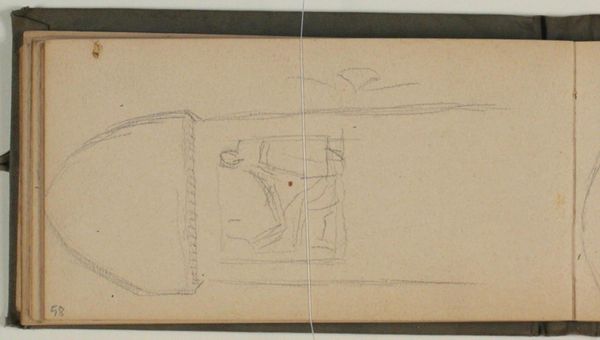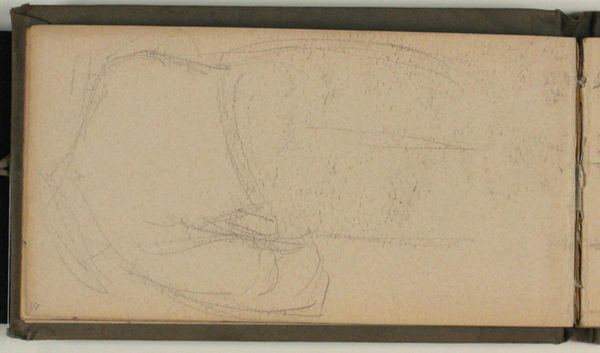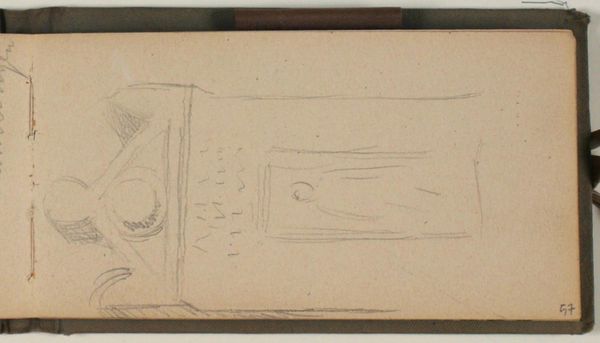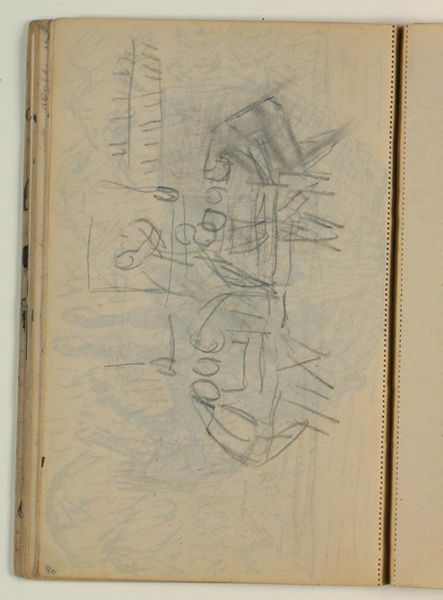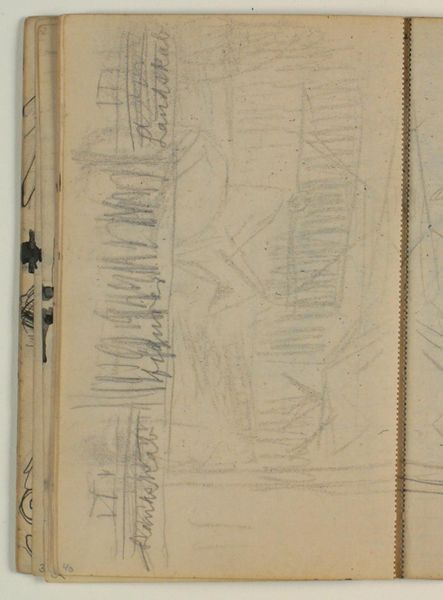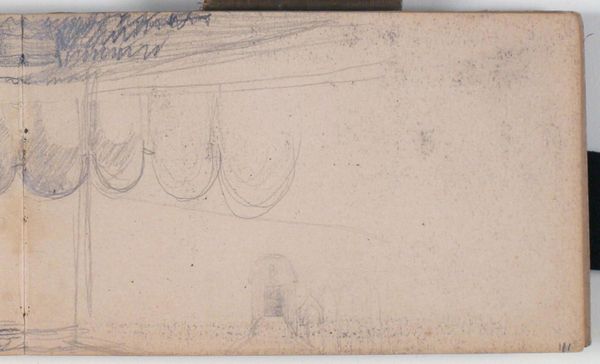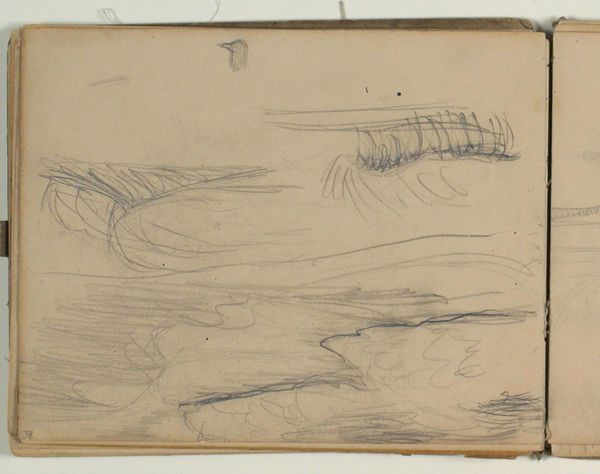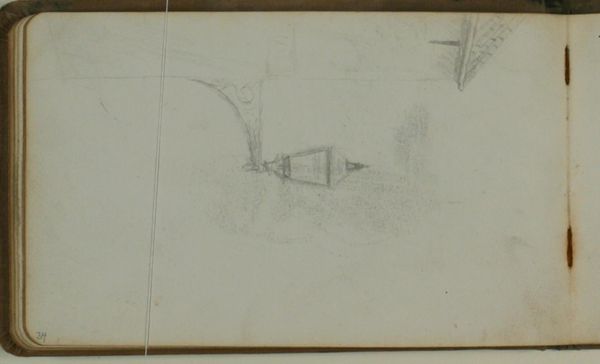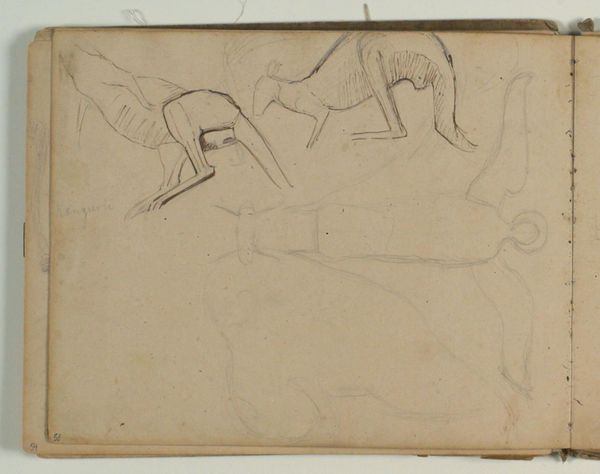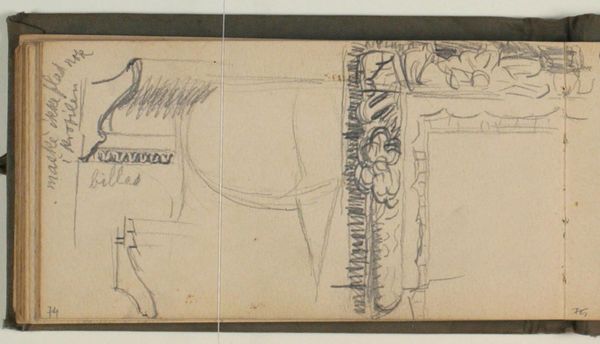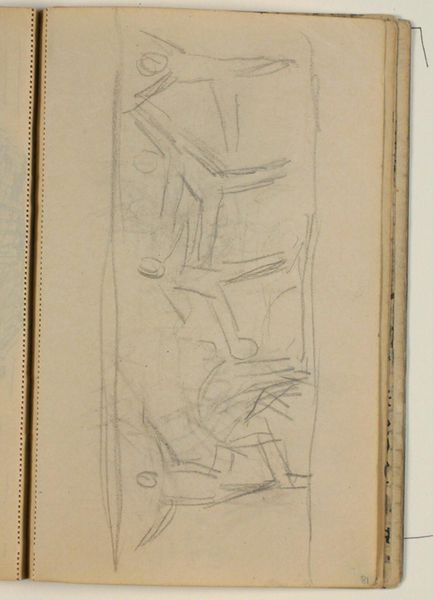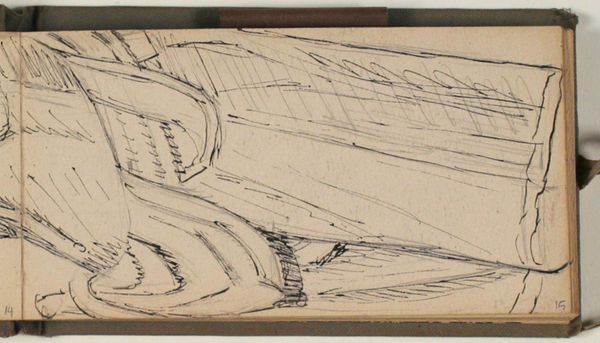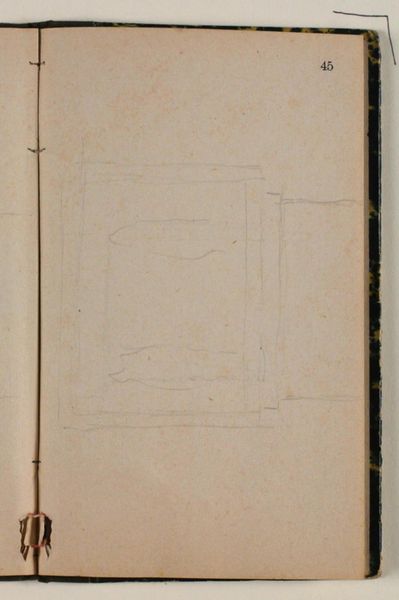
drawing, paper, pencil
#
portrait
#
drawing
#
paper
#
geometric
#
pencil
Dimensions: 92 mm (height) x 174 mm (width) (bladmaal)
Editor: Here we have Niels Larsen Stevns's "Studie af gravsten," or "Study of Gravestones," created in 1919 using pencil on paper. It looks like a quick sketch, capturing the basic form of a tombstone. What strikes me is its stillness. What do you see in this piece? Curator: This deceptively simple sketch invites us to consider larger questions around societal memory and the very act of memorializing. The tombstone, etched onto paper with ephemeral pencil strokes, asks, what are we remembering, and who gets remembered? Editor: I see your point! Curator: Stevns created this sketch shortly after the end of World War One, a period marked by immense loss and the rise of public monuments commemorating the fallen. We must question whose stories are enshrined in stone and bronze, and whose are marginalized or erased altogether. Look at how geometric shapes make up the design around the tombstone's edges: which narratives are built around controlling and restrictive structures, even in death? Editor: So you’re saying the visual language reflects larger social power dynamics? Curator: Precisely. Even this simple sketch urges us to confront uncomfortable truths about how history is written—and on whose tombstones it is etched. Does this piece make you think of anything else? Editor: It reminds me that memory is actively built and reinterpreted through representation. Thanks, I didn't think a simple drawing of a gravestone could contain so much. Curator: Art often provides a quiet mirror to our societal structures. Looking closely helps us decipher and possibly transform them.
Comments
No comments
Be the first to comment and join the conversation on the ultimate creative platform.
